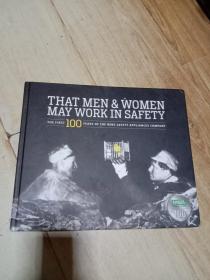
Work Safety Supervision Manual
正版保障 假一赔十 可开发票
¥ 105.8 8.8折 ¥ 120 全新
库存9件
作者中国石油国际勘探开发有限公司 编者;责编:郎杰
出版社中国电力出版社
出版时间2024-03
装帧其他
货号29707388
上书时间2024-11-04
- 最新上架
商品详情
- 品相描述:全新
图书标准信息
- 作者 中国石油国际勘探开发有限公司 编者;责编:郎杰
- 出版社 中国电力出版社
- 出版时间 2024-03
- ISBN 9787518364466
- 定价 120.00元
- 装帧 其他
- 开本 其他
- 【内容简介】
-
:
本书为英文书,主要用于促进海外项目安全监督人员系统地掌握监督基本理论和基本方法,进一步推动安全监督工作,提高现场监督管理水平,是中油国际致力加强安全生产监督和管理的具体体现。本书以非常规施工作业、关键生产设备设施、辅助生产设备设施为特定监督对象,运用安全系统工程的理论和方法,在研究相关法律法规、标准规范的基础上,结合现场实际,开展了风险识别和案例分析,描述了监督要点及监督的主要内容,还编制了配套的现场监督检查表,旨在提供一本系统、丰富、实用的参考读物,指导安全监督人员提升监督管理水平。 - 【目录】
-
1 Overview of Supervision Technology
1.1 Risk management
1.2 References for work supervision
1.3 Implementation of supervision
2 Working Mode of Supervision
2.1 Supervision principles
2.2 Supervision requirements
2.3 Supervisors‘ main work
2.4 Supervisors‘ supervision mode
2.5 Implementation of supervision
2.6 Use of ‘STOP‘ card
2.7 Stand-down
2.8 Communication and feedback
3 Supervision of Non-routine Operations
3.1 Hot work
3.2 Work on temporary power systems
3.3 Mobile lifting operations
3.4 Work at heights
3.5 Work in confined spaces
3.6 Excavation
3.7 Startup (shutdown) of large-scale facilities
3.8 Maintenance work in oil and gas businesses
3.9 Chemical cleaning
3.10 Maintenance of power facilities
3.11 Work with hydrogen sulfide
3.12 Line break operations
3.13 Scaffolding operation
4 Supervision of Critical Equipment and Facilities
4.1 Pumping units
4.2 Oil transfer pumps
4.3 Storage tanks
4.4 Oil and gas pipelines
4.5 Special oil feld vessels
4.6 Oil feld heating equipment
4.7 Wet steam generators
4.8 Crude oil loading/unloading trestles (platforms)
4.9 Water injection pumps
4.10 Gas production wells
4.11 Natural gas purification units
4.12 Natural gas liquids (NGL) recovery units
4.13 Sulfur recovery facilities
4.14 Natural gas compressors
4.15 LPG stations
4.16 Flaring and venting systems
5 Supervision of Auxiliary Equipment and Facilities
5.1 Transformation and distribution systems
5.2 Low voltage electrical circuits
5.3 Power (lighting) distribution boxes (cabinets, panels) and electric equipment
5.4 Grounding systems
5.5 Lightning protection and anti-electrostatic facilities
5.6 Hand-held electric tools
5.7 Mobile electrical equipment
5.8 Fire-fighting equipment
5.9 Automatic control systems
5.10 Hazardous chemical warehouses
5.11 Industrial ladders and platforms
5.12 Lifting machinery
5.13 Boilers
5.14 Industrial gas cylinders
5.15 Air compressors
References
内容摘要
本书为英文书,主要用于促进海外项目安全监督人员系统地掌握监督基本理论和基本方法,进一步推动安全监督工作,提高现场监督管理水平,是中油国际致力加强安全生产监督和管理的具体体现。本书以非常规施工作业、关键生产设备设施、辅助生产设备设施为特定监督对象,运用安全系统工程的理论和方法,在研究相关法律法规、标准规范的基础上,结合现场实际,开展了风险识别和案例分析,描述了监督要点及监督的主要
内容,还编制了配套的现场监督检查表,旨在提供一本系统、丰富、实用的参考读物,指导安全监督人员提升监督管理水平。
相关推荐
-

Work Safety Supervision Manual
全新广州
¥ 79.92
-

Work Safety Supervision Manual
全新上海
¥ 106.68
-

Work Safety Supervision Manual9787518364466
全新广州
¥ 80.64
-

Health and Safety at Work Revison Guide
九五品保定
¥ 100.00
-

THAT MEN WOMEN MAY WORK IN SAFETY
九品郑州
¥ 399.00
-

HEALTH+SAFETY AT WORK July 2017
九品临汾
¥ 99.00
-

International Health and Safety at Work Revison Guide
九五品保定
¥ 100.00
-

Tolley's Health and Safety at Work Handbook
八五品惠州
¥ 500.00
-

WORK health + safety 工作健康+安全
八五品汕头
¥ 20.00
-

Electrical Safety-Related Work (大16开) 【详见图】
九品北京
¥ 580.00
— 没有更多了 —













以下为对购买帮助不大的评价